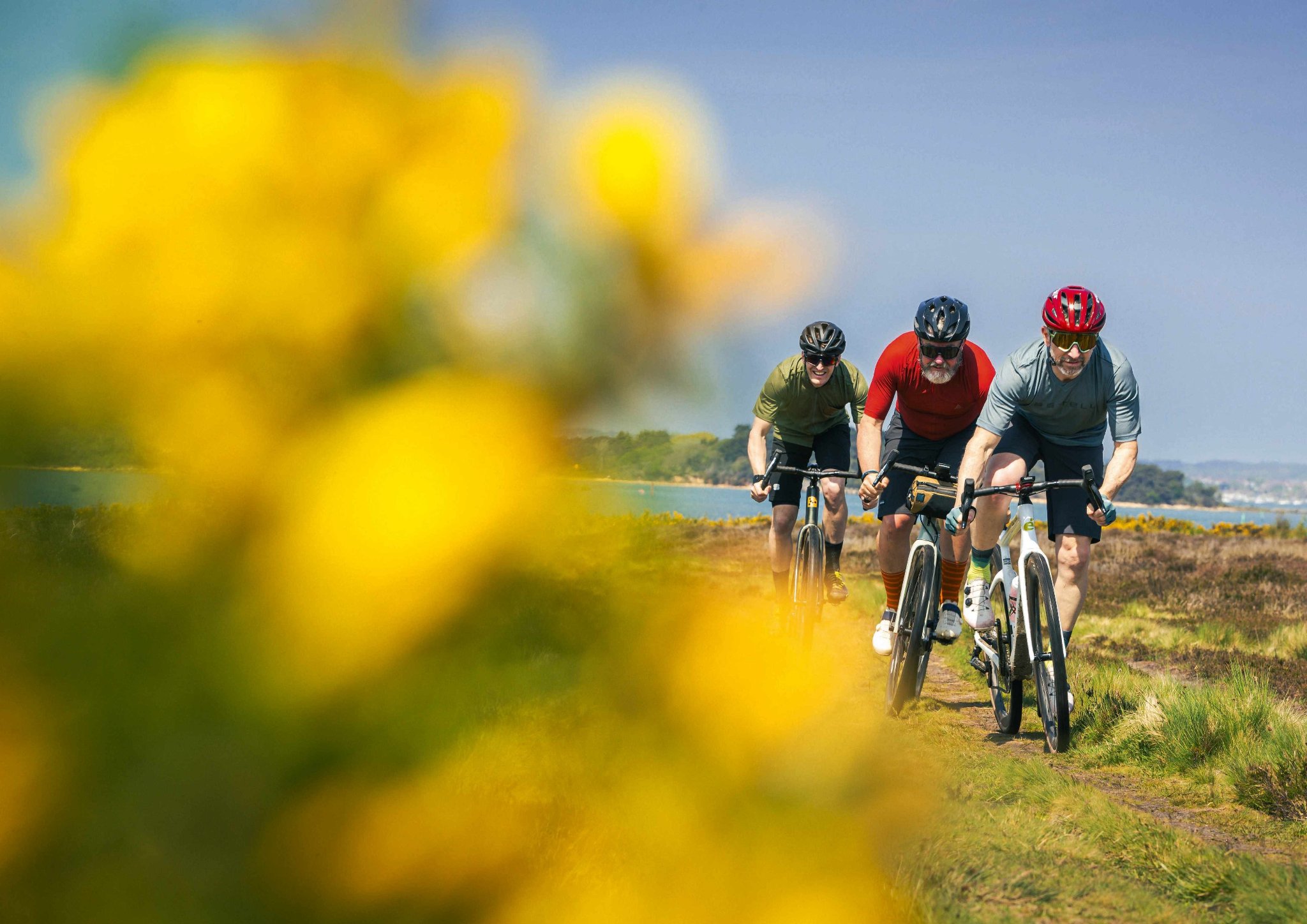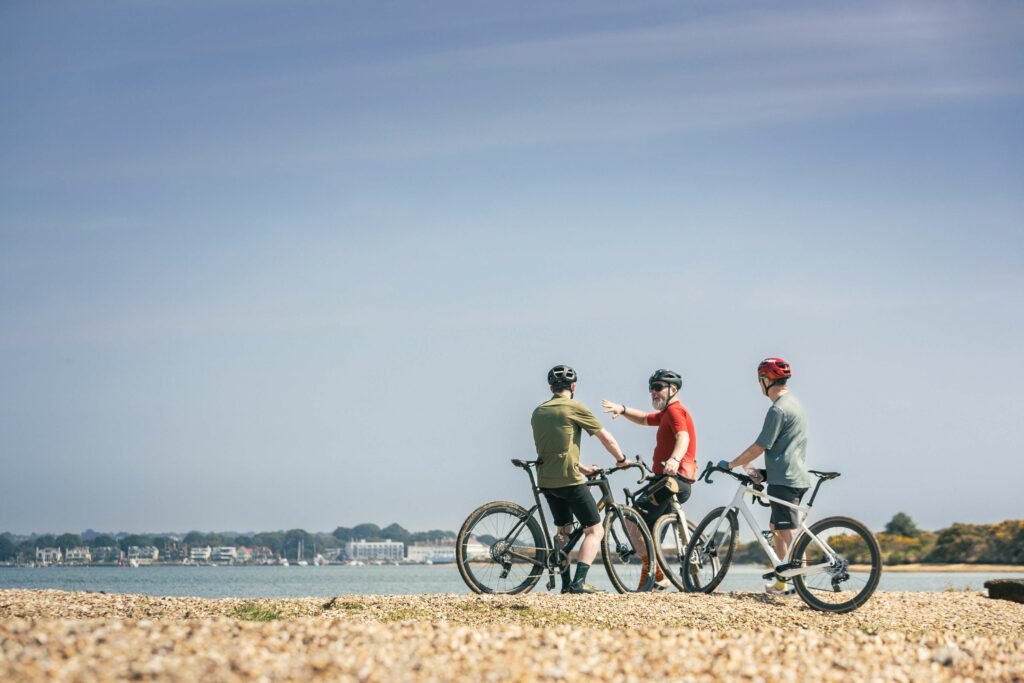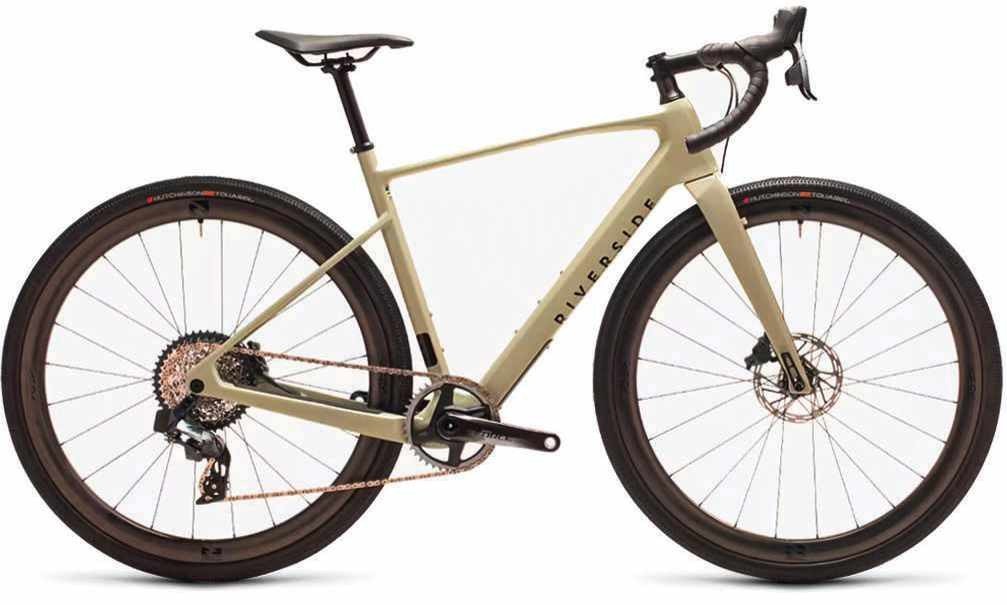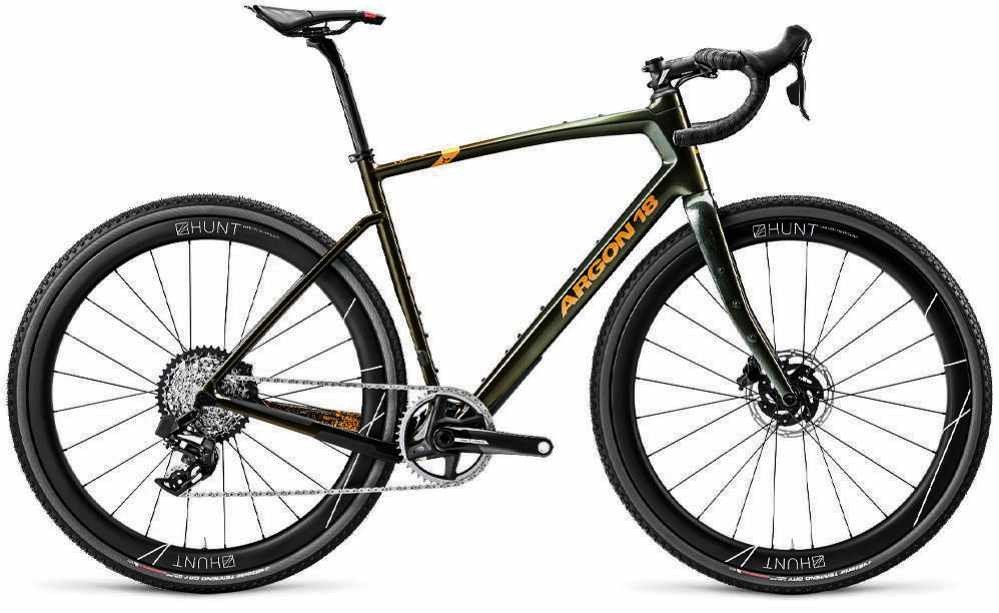THE BIKE TEST
Fast track
Which of this trio of speedy mid-priced gravellers would make the best all-round, off-road race companion? We find out…

Need to know
Find out how this speedy breed of gravel bikes aims to get the balance right to suit the demands it faces
Our trio of new gravel machines here eschew the current trend for progressive-geometry, mountain bike-inspired styles such as the freshly crowned gravel bike of the year, the GT Grade Carbon Pro LE. Instead, our three contenders all take inspiration from road-going rides.
This means their frame design and geometry should blend the compliance and tyre clearances to cope with off-road riding with the rider position of a speedy roadster to produce an all-surface-capable bike. And one that’ll keep you on pace with the roadies on a Sunday club run yet still be able to compete at the sharp end of a gravel event.
01 Single chainrings
All of our bikes use SRAM’s electronic wireless 1x gravel-specific AXS XPLR drivetrains and all come with lightweight carbon wheels. A 1x set-up helps you avoid getting a clogged up front derailleur in mucky conditions. It still offers a decent range of gears to cope with the type of terrain you’ll be on, but has bigger gaps between the gears and prioritises lower ratios over the highest gears of road bikes.
02 Which wheels?
The lightweight, faster-rolling 700c wheels wheels here show that the bikes are also built for speed. Larger wheels have more versatility for use on tarmac too. Reducing wheel size to 650b in order to fit wider-volume tyres is more commonly seen gravel bikes designed for more rugged terrain. You might still find 650b wheels on smaller-sized frames, though, helping to maintain proportional geometry.
03 Treading carefully
Gravel tyres are often larger and knobblier than on road bikes, with widths from around 30mm to 48mm. Many of the best gravel tyres have a fast-rolling centre tread with knurling, or side knobs, to improve cornering on mixed surfaces. You’ll usually find tubeless tyres on gravel bikes (see the ‘Bike tech explained’ box for why).The tyres on these test bikes are around 40mm wide to blend speed, grip and comfort.
04 Many extras?
Since these bikes are built with speed at the forefront, extras aren’t a huge priority, as anything superfluous would only add unnecessary weight. The Riverside and Cervélo keep things stripped down and sporty while the Argon 18 adds another layer of bikepacking versatility.
05 How we tested
Because of the more all-round nature of these bikes, in a departure from my usual purely off-road gravel test loops for gravel bikes, I’ve added a 20km section of tarmac with a flat, fast road section, a bit of rolling terrain and a steep tarmac climb to the trail head to test the versatility of these models. But which of our trio will take the speedy all-rounder, off-roader crown? Let’s head to the trails and tarmac to find out…
● Warren has ridden, written, and tested every trend, tech change-up and development for the last 25 years and was a very early adopter of gravel having the pleasure of living within spitting distance of Salisbury Plain.

Bikes on test
Three machines designed for going fast beyond the tarmac

Riverside GCR Force AXS XPLR | £4,000
This Decathlon bike with SRAM Force AXS XPLR and Reynolds ATR carbon wheels looks great value. But how does it perform?

Cervélo Áspero Rival AXS XPLR | £5,200
This new version is softer and smoother with a new frame shape to try to be less pure racer and more all rounder. Has it worked?

Argon 18 Dark Matter Force AXS XPLR | £5,500
This premium-build version looks good value. It’s designed as a rugged ride that’s capable of racing. Is it the perfect gravel bike?
Bike tech explained
Your quickfire guide to bike jargon
SRAM AXS XPLR
● SRAM’s wireless AXS groupsets combine hydraulic disc brakes with fully wireless gear shifting. In the XPLR iterations, the gearing is designed specifically for gravel, offering wider gear ranges and lower gearing to keep you pedalling on the roughest and steepest of terrain.
Tubeless-ready wheels
● These allow you to use tubeless tyres, rim tape, valves and a tyre sealant so you don’t need inner tubes. Tubeless tyres can be run at lower pressures for comfort on rough terrain, and virtually eliminate pinch punctures.
Dropper post
● You can lower this seatpost to allow you to manoeuvre the bike more easily in technical downhill sections. It often comes with a handlebar-mounted remote control so you can it lower automatically.
Flared bar
● Measuring wider on the drops than at the hoods, flared bars are a popular choice on a typical gravel bike setup. They give a wider, more stable position in the drops, which comes in handy on rougher terrain and when descending, and also provides a little more space between the drops for luggage.
Trail
● The trail figure is derived from a combination of the head-tube angle and the fork offset and shows how far the tyre’s contact point ‘trails’ behind the steering axis. A small measurement makes for a fast-handling bike (such as a road race bike); more trail slows down the steering response, making a bike feel more stable on rough off-road terrain.
Reach
● The horizontal distance between the centre of the bottom bracket to the centre of the head tube. A longer reach lowers your ride position, a shorter reach means you sit more upright. Your ride position will be a little more upright on a gravel bike compared to a fast road bike.
Stack
● The vertical distance between the top of the head-tube to the centre of the bottom bracket. Taller stack means a more upright ride position.